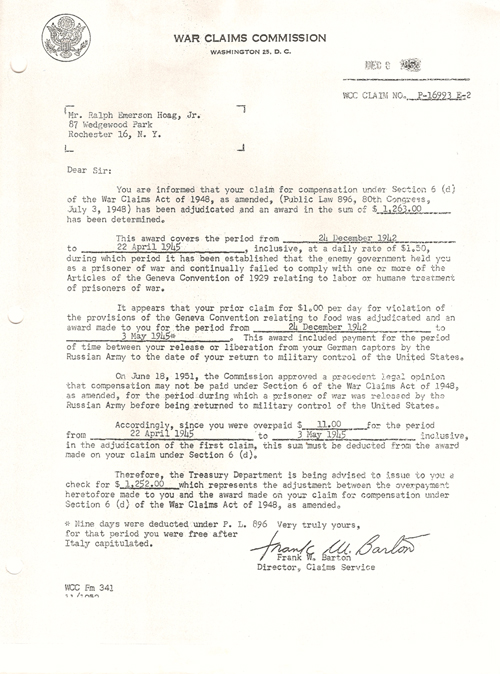
William Hall is pictured here, second from the right, with service buddies. The photo was probably taken after his return from overseas (as he seems to be wearing corporal’s stripes). It have been taken at Ft. Benning, Georgia.
The following report on ex-POW William Hall’s camp experience is from a Canandaigua-area (New York) newspaper—probably The Democrat and Chronicle (Rochester, New York) as it is referred to in the article, circa August 1944.
Canandaiguan Visits Home After Nazi
Prison Escape
Canandaigua [New York]—“If it hadn’t been for the Red Cross food parcels none of us would have lived.”
Thus Pfc. William Hall sums up his nine months’ experience in Axis prison camps in almost the same words used by First Sgt. Earl W. Huddleston, Montgomery, W. Va., in the dramatic story of his escape from Camp 59, Italy, in the July and August issues of Cosmopolitan.
But while the West Virginian, apparently with the approval of public relations officers of the War Department details his capture, imprisonment and fight for freedom, the 28-year-old Canandaiguan, back home after two sensational escapes, had little to tell yesterday of his experiences.






You must be logged in to post a comment.